iPhone 14 rumors ranked — the must-haves vs the rest
What new features must Apple's next flagship phone simply have to include?
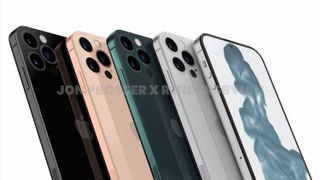
The iPhone 13 may have just arrived, but that hasn't stopped iPhone 14 rumors from percolating. Thinking about new, unreleased phones can be exciting, as it gives everyone a chance to imagine how Apple might improve existing features or adopt technologies that haven't been available before.
But just because there's a lot of chatter surrounding a particular iPhone 14 feature doesn't mean it's nailed on to appear on the next iPhone. Sometimes Apple scraps things during the planning stages. Other times, features rise up to take another one's place. And then there are some rumored changes that, no matter how well-sourced, were never seriously considered in the first place.
More than a few iPhone 14 rumors have already emerged at this stage, but it's a pretty solid bet that not every single one is going to make Apple's final cut. Here's a list of the biggest rumored iPhone 14 changes so far, rated on how crucial they are to success of next fall's iPhone release. In other words, we're picking the features that we believe are must-have additions for the iPhone 14, the nice-to-have changes that may or may not happen, and the shouldn't-have features that Apple needn't bother wasting time and resources on.
iPhone 14 Touch ID: Must-have
The other day, our global editor Mark Spoonauer wrote that the iPhone 14 would be "pointless" if Apple didn't revive Touch ID. And really, that's not an exaggeration. Anyone wearing a mask and trying to unlock their iPhone can tell you how necessary it is to build an iPhone with some sort of Touch ID sensor to act as a backup to Face ID.
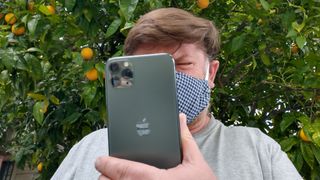
Apple's face-based phone-unlocking security is the best of its kind, but it's severely hampered during the age of Covid, when masks prevent your iPhone's sensors from getting a clean scan of your face. Imagine how much easier things could be if you could just press your finger against a sensor, whether it's underneath the iPhone 14's display or located on the power button, when it's time to unlock your phone or making a moment payment.
Apple is reportedly working on a change to FaceID that would help it recognized masked faces. If that can't come to pass by the fall, we hope that Touch ID will be around to let us use our iPhones with minimal interruption.
iPhone 14 120Hz displays: Must-have
The iPhone 13 Pro models already have adaptive displays, allowing them to adjust refresh rate based on on-screen activity. If you're doing a lot of scrolling, for example, your iPhone 13 Pro Max will raise its refresh rate to 120Hz, making everything scroll by more smoothly on your phone's screen.
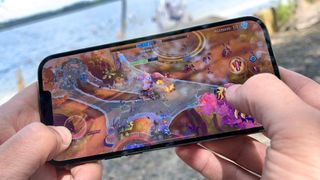
That just leaves the iPhone 13 and iPhone 13 mini as the odd phones out — not just among other iPhone 13 models but among flagship devices as a whole. Most major phones are capable of ramping up their display refresh rate to 120Hz these days, and the ones that aren't usually can get to at least 90Hz. The less expensive iPhone models are stuck at 60Hz.
That's apparently a decision Apple made when putting together the iPhone 13, as its display suppliers couldn't make enough adaptive displays for the standard iPhone 13. Presumably, that's going to change with the next iPhone upgrade, as all iPhone 14 models are tipped to get adaptive displays. We hope that comes to pass, or Apple risks getting left well behind other phone makers who've long since added fast-refreshing displays to feature sets. (Of course, after we published this, a new report claims that the iPhone 14 may not get a fast-refreshing display after all.)
48MP camera on the iPhone 14: Must-have
It would be misleading to say that Apple's been relying on the same 12MP camera as the iPhone's main shooter for years — sensors get larger, apertures widen and other changes are baked in to keep the latest iPhones atop the best camera phone ranks. But the 12MP resolution of the phone's main camera has been a constant since the iPhone 6s. After all, it's not the megapixels, Apple might argue, but what you do with them.
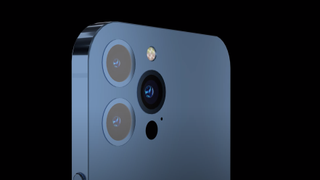
The trouble is, Apple's competitors are beginning to ramp up the resolution on their main cameras. The Galaxy S21 Ultra, for example, features a 108MP main camera, while both the Pixel 6 and Pixel 6 Pro have turned to 50MP lenses for their wide-angle camera. Those are the companies Apple tends to get measured against on camera quality, and the iPhone 14 could come into future battles seriously under-armed
While computational photography will still power a lot of Apple's expertise with mobile photography, hardware improvements shouldn't be left out of the mix. We hope rumors that a 48MP main camera is slated for the iPhone 14 Pro models turns out to be accurate, so that next year's iPhones can continue to slug it out with whatever Samsung and Google have to offer.
iPhone 14 faster charging: Nice-to-have
Speaking of things that haven't changed much, the iPhone's 20W wired speed feels like it's lost in time. It doesn't help that rival phone makers like OnePlus keep ramping up the speeds at which its phones charge — the OnePlus 9 series supports 65W wired charging, and one rumor claims the upcoming OnePlus 10 Pro will double that speed to 125W.
We'd certainly like to see the iPhone 14 charge faster, but it's honestly not as pressing as some of the above changes that Apple's under pressure to make. Charging speeds are great and all, but battery life is even more important, and we would rather Apple devote its efforts to continue battery life improvements it introduced with the iPhone 13 lineup.
iPhone 14 Max: Nice-to-have
According to the rumor mill, we're getting four new iPhones again this fall, but a mini version won't be among them. Instead, the thinking goes, we'll have an iPhone 14 Max, a less expensive version of Apple 6.7-inch phone for people who don't want to pay the big bucks the Pro model commands.
As I've written previously, fans of small screen iPhones will have to accept the fact that Apple's moving to larger devices. And given the popularity of big phones, it makes sense that Apple would want to offer a 6.7-inch model for less. (Rumors suggest that the 6.1-inch iPhone 14 will become Apple's entry-level model at $699 while the 6.7-inch Max will occupy the $799 slot.) As far as important changes go, though, this is simply Apple fine-tuning its lineup to maximize sales.
No notch on the iPhone 14: Nice-to-have
Perhaps no iPhone feature gets kicked around as much as the notch that's been dipping down into the handset's display since the arrival of the iPhone X in 2017. After shrinking the notch for the iPhone 13, Apple could go one step farther this year and remove the notch entirely, giving iPhone fans an unobstructed view of the screen.
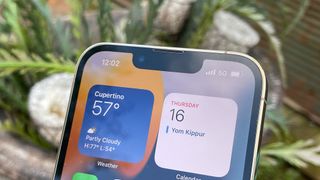
We hope that the notch eventually disappears — edge-to-edge screens are far more attractive than ones with a notch on one side. But whether that happens this year, or with the 2023 iPhone as some have suggested, it won't make or break the iPhone 14. Apple's sold plenty of phones saddled with the notch, and it will continue to do so until it can find a way to cleverly stash the sensors needed to run Face ID.
USB-C on the iPhone 14 Pro: Shouldn't have
Every year, it seems that someone speculates at least one iPhone model will drop Apple's proprietary Lightning port in favor of USB-C. This year, it's the iPhone 14 Pro's turn to be rumored as the device that will finally usher in the end of Lightning, fueled by the desire of European regulators to standardize the cables needed to charge phones.
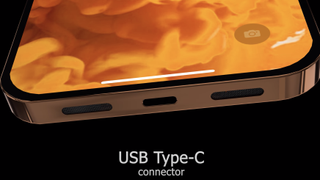
It seems very unlikely that Apple would drop a charging technology from one group of phones while keeping it on some others. It's even less likely that Apple would introduce a new charging standard when its true desire would be to have no charging ports at all and just rely on wireless charging for its phones. But likely or not, swapping out Lightning for USB-C doesn't figure to have a big positive impact on users' lives. If anything, given all the Lightning cables and wall chargers a lot of us have acquired in recent years, it could lead to even greater clutter and accessory frustration.
Sign up to get the BEST of Tom's Guide direct to your inbox.
Get instant access to breaking news, the hottest reviews, great deals and helpful tips.
Philip Michaels is a Managing Editor at Tom's Guide. He's been covering personal technology since 1999 and was in the building when Steve Jobs showed off the iPhone for the first time. He's been evaluating smartphones since that first iPhone debuted in 2007, and he's been following phone carriers and smartphone plans since 2015. He has strong opinions about Apple, the Oakland Athletics, old movies and proper butchery techniques. Follow him at @PhilipMichaels.
